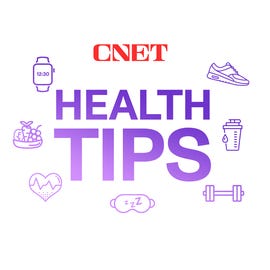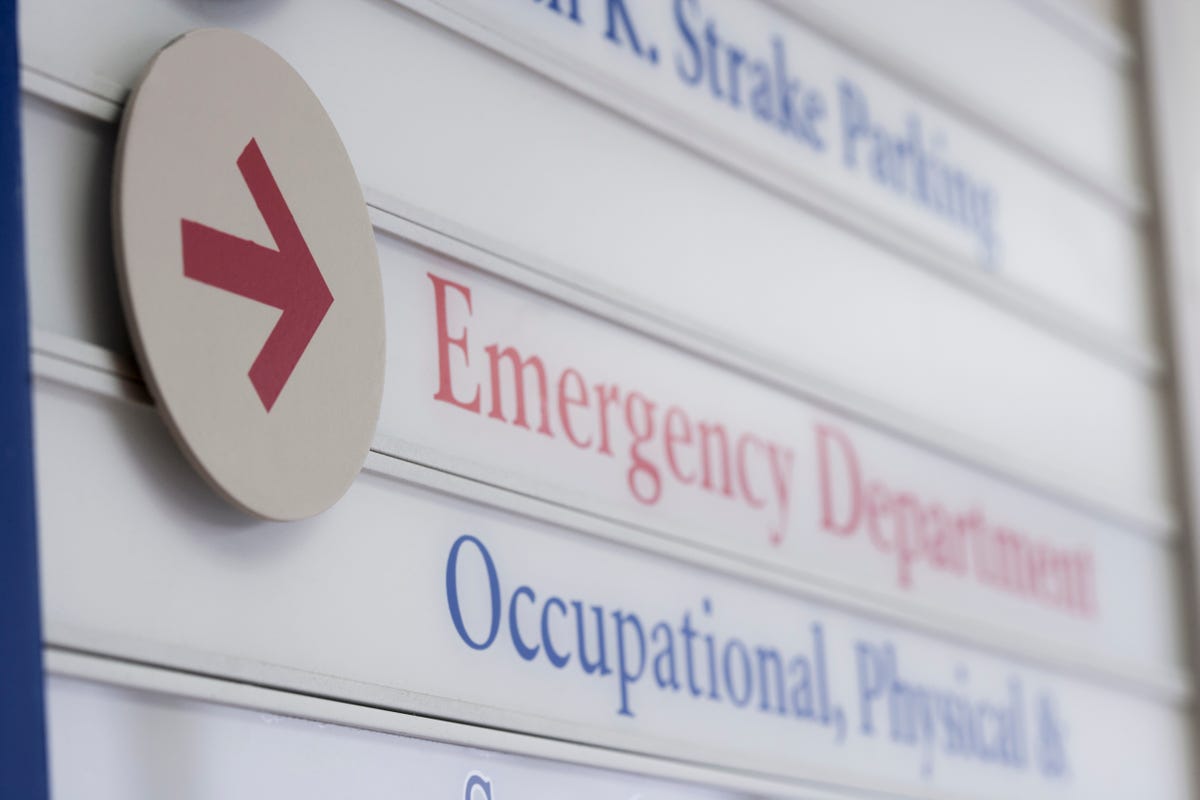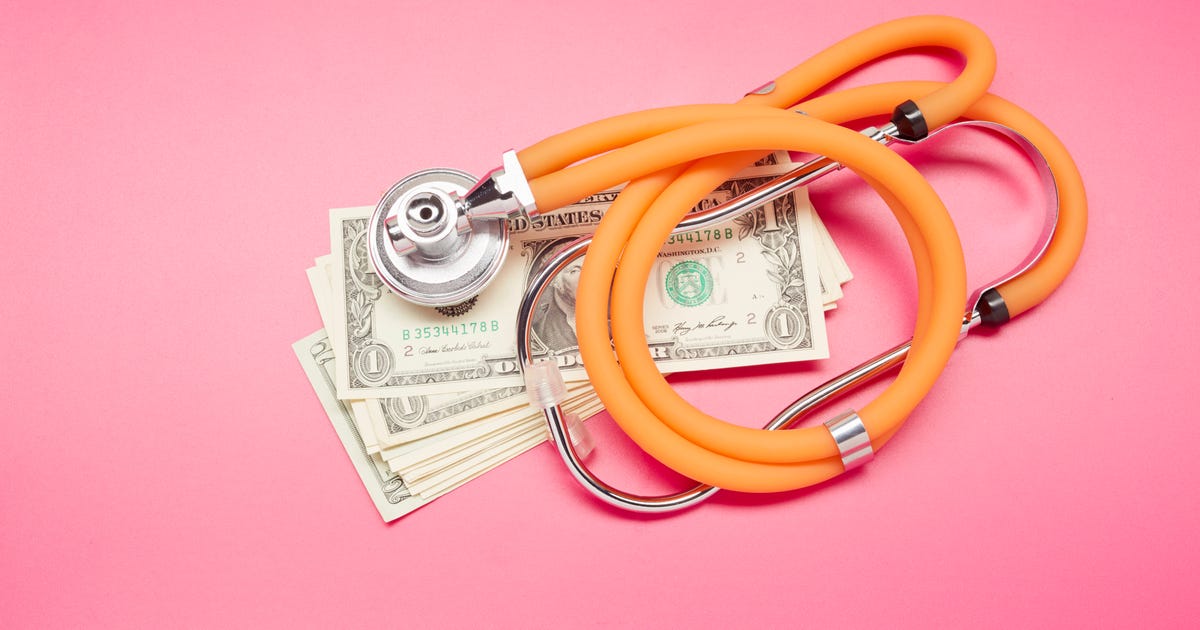Table of Contents

While having at least some medical insurance is recommended for everyone, it can be really expensive if your employer doesn’t pay for it. What’s more, navigating the health insurance marketplace may feel totally chaotic and soul-sucking. About 10% (PDF) of Americans didn’t have health insurance in 2020, and most that don’t are uninsured because they can’t afford it or don’t qualify for financial assistance in their state.
But everyone needs to go to the doctor sometimes. So what do you do?
First, you could qualify for Medicaid financial assistance depending on your circumstances and location, and you could also qualify for Medicare. Even if you’ve already checked in the past, it’s worth checking your state’s Medicaid eligibility since it was expanded in most states. You can also fill out this application to see which government assistance programs you’re eligible for. What’s more, there are plans that are alternatives to traditional health insurance.
If those plans aren’t a fit, you’re not out of options. Here are tricks to getting quality care when you’re paying out of pocket.
For more health tips, keep these plants in your room for better sleep and three easy ways to find out your blood type.

Reminding your care team or doctor that you don’t have health insurance may help them tailor a treatment plan that won’t break your bank.
Sturti/Getty Images
Take advantage of preventative care and free screenings
Some cities or pharmacies have pop-up events that run simple blood tests or health screenings. Keep your eye out for these events and take advantage, as they can help you keep tabs on your health and hopefully prevent more doctor’s visits or medical interventions down the line.
In New York, for one example, the state health department says it offers free breast, colorectal and cervical cancer screening for uninsured people in the state. If you have a health issue that you’d like to check up on, searching “free screening/testing near me” wouldn’t be a bad way to start just in case there are any nearby opportunities.
Always tell your doctor and the front desk that you don’t have health insurance
Doctors’ jobs are to care for you, and that includes making sure you have access to the care that they recommend. Before we get into the details of where to go for health care and when, it’s a good idea to let whoever checks you in for your appointment know that you’re uninsured and will be paying out of pocket. That way, they can give you the available payment options, which may include a payment plan or a sliding payment scale if you qualify.
Read more: Best Telemedicine Services for an At-Home Doctor’s Visit
Use telemedicine for primary care/non-urgent doctor’s visits
Telemedicine isn’t going anywhere. And depending on which service you use, you could save money doing a doctor’s visit online, regardless of your insurance status.
If you don’t have health insurance, K Health is a good option for folks looking for general primary care. For $35, you can schedule an appointment with a doctor to discuss an issue or manage a preexisting condition. K Health also says you can start a monthly membership plan starting at $29 for unlimited primary care visits.
What sets K Health apart from other telemedicine services is its symptom-sourcing tool, which allows you to type in all of your symptoms and see some of the most common diagnoses of people with similar symptoms who got an official diagnosis.
Another good option if you don’t have health insurance is Sesame, which is a straightforward telehealth site for booking a cheap doctor’s appointment online (sometimes as low as $20). Their website is designed in a way that lets you shop around for a doctor, and you can also schedule an in-person appointment, though an in-person price might be higher.

If you’re in-between insurance plans, telemedicine services are a convenient and cheaper way to take care of straight-forward health issues, like renewing a prescription you know you need.
Westend61/Getty Images
Go to walk-in clinics, and shop around for ones with pay scales
If you have a health issue that requires hands-on healing from a provider that telemedicine just can’t provide, you should shop around for local walk-in clinics, community health centers or similar health care facilities. These facilities will probably be much cheaper than paying out-of-pocket at a hospital or private practice, but you should be prepared to pay a fee up front. One popular walk-in clinic for non-emergencies is the CVS MinuteClinic.
Community health clinics often have a sliding payment scale available if you can’t afford the full cost, but you may have to bring proof of eligibility (like pay stubs). Fortunately, some community clinics have a “no patients turned away for lack of funds” policy, which is helpful if you can’t afford to pay any fee. You can search for a health center with sliding scales on this federal directory. Some public hospitals also offer sliding fees.
Some community centers are designed to serve certain specific populations like LGBTQ+ people, unhoused people or even musicians. It’s worth checking to see if any of these apply to you.
Look into direct primary care
Another health care model that’s gaining popularity is direct primary care, where you pay the health provider a monthly fee instead of the insurance company, which may allow you a deeper relationship with your doctor in addition to cheaper bills. This model should work well for many uninsured patients needing regular check-ups, but you might be on the hook for additional tests or referrals, if needed. Here’s a map to help you find a DPC facility near you.
Go to the emergency room if it’s a true emergency
If you’re injured or your life is in danger, call 911 or go directly to the ER. Regardless of your ability to pay or health insurance status, doctors are legally required to treat everyone who’s experiencing a medical emergency. Though medical bills can be daunting, your health is worth more than any dollar amount.
When you check in or out, you can tell the front desk you’re uninsured and they may help you work out a payment plan. You should also tell your doctor you’re uninsured in case it changes where they suggest a follow-up appointment or a follow-up care plan, should you need one.

ER Productions Limited/Getty Images
If you’re experiencing a medical emergency and your life (or a body part) is at risk, go to the emergency room. Doctors will stabilize and treat you regardless of your ability to pay. If you’re experiencing a less urgent (but still pretty urgent) health issue, urgent care centers are usually significantly less expensive than ERs, and may treat things like sprains, non-life-threatening wounds and pains.
Negotiate when you get the medical bill
If you get the bill in the mail and are surprised to see what’s on it, call the hospital and ask for an itemized version, or go over every charge to make sure you were billed correctly. Then, if you still can’t pay it, see if they’ll lower it.
If they can’t lower it, ask to set up a payment plan. Tell them what you’re able and willing to pay, and someone in the billing department will most likely be able to work it out with you.
Do your research before the appointment so you don’t agree to unnecessary tests
Gone are the days of WebMD diagnoses. If you know how to look for it, there’s a lot of credible health information publicly available online. It’s important not to panic-diagnose yourself with cancer when you type in your headache symptoms. But we’ve come a long way in the year 2022, and some of the guidance and research that informs up-to-date diagnoses and treatments for common illnesses are just an internet search away, with outlines from reputable medical organizations.
For example, if you need to go to the gynecologist, you can find information on different reproductive health topics from the American College of Obstetricians and Gynecologists, which is a large medical college that helps guide the standard of care for practicing OB-GYNs in the US. The American Academy of Pediatrics helps guide standards of care in the US for health care workers who treat children.
Large hospital systems, like the Cleveland Clinic and the Mayo Clinic, are also good online sources to reference before an appointment to see what the recommended treatment path might be for your health concern, so you’re not completely blindsided by a test (or you could see if another treatment option might be more affordable but equally effective). The US Preventive Services Task Force is another institution that you could reference for tests and preventative care. And the one we’ve all grown familiar with over the pandemic: the US Centers for Disease Control and Prevention is constantly updating its guidance on diseases and public health.
These are just a few sources that rely on current medical information. While you’re searching online, be sure to check the date on the page which shows when the article or page was last published. These colleges and institutes continually update guidance and health information to reflect new research on treating patients.
The information contained in this article is for educational and informational purposes only and is not intended as health or medical advice. Always consult a physician or other qualified health provider regarding any questions you may have about a medical condition or health objectives.





More Stories
Avocado Cacao Mousse – JSHealth
Janelle Brown on Garrison’s Mental Health Before His Death
How To Finally Beat Insomnia